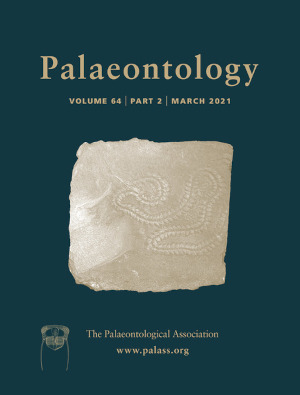Reg. Charity No. 1168330

Fossil gastric pellets (regurgitalites) have distinct taphonomic characteristics that facilitate inferences of behavioural ecology in deep time, despite their rarity in the fossil record. Using the taphonomic patterns of both extant and fossil small mammals from more recent geologic deposits as a guide, we assess the taphonomy of three unusual multi-individual aggregates of mammal skeletons from palaeosols at Egg Mountain, a dinosaur nesting locality from the Upper Cretaceous Two Medicine Formation, Montana, USA. One aggregate consists of two individuals of the multituberculate Filikomys primaevus. This specimen is characterized by brecciated crania, articulated postcrania, and an absence of digestive markings, all suggestive of a non-predatory origin. Two additional aggregates consist of 3 and 11 individuals, respectively, primarily of the marsupialiform Alphadon halleyi. High proportions of crania and indigestible elements (e.g. teeth), extensive disarticulation and breakage, digestive corrosion patterns, and the absence of a phosphatic ground mass are indicative of regurgitalites and align with features of extant prey in diurnal raptor gastric pellets. We interpret these specimens as the oldest known mammal-bearing regurgitalites. The discrepancy in taphonomic features implies behavioural separation between the two mammalian taxa at the locality. Abundant shed teeth and nesting evidence at the locality favours the non-avian theropod Troodon formosus as the predator responsible for the regurgitalites, congruent with previous inferences of a small-bodied prey diet, manipulation of prey during feeding, heightened metabolic processes, and potential nocturnality for this taxon.